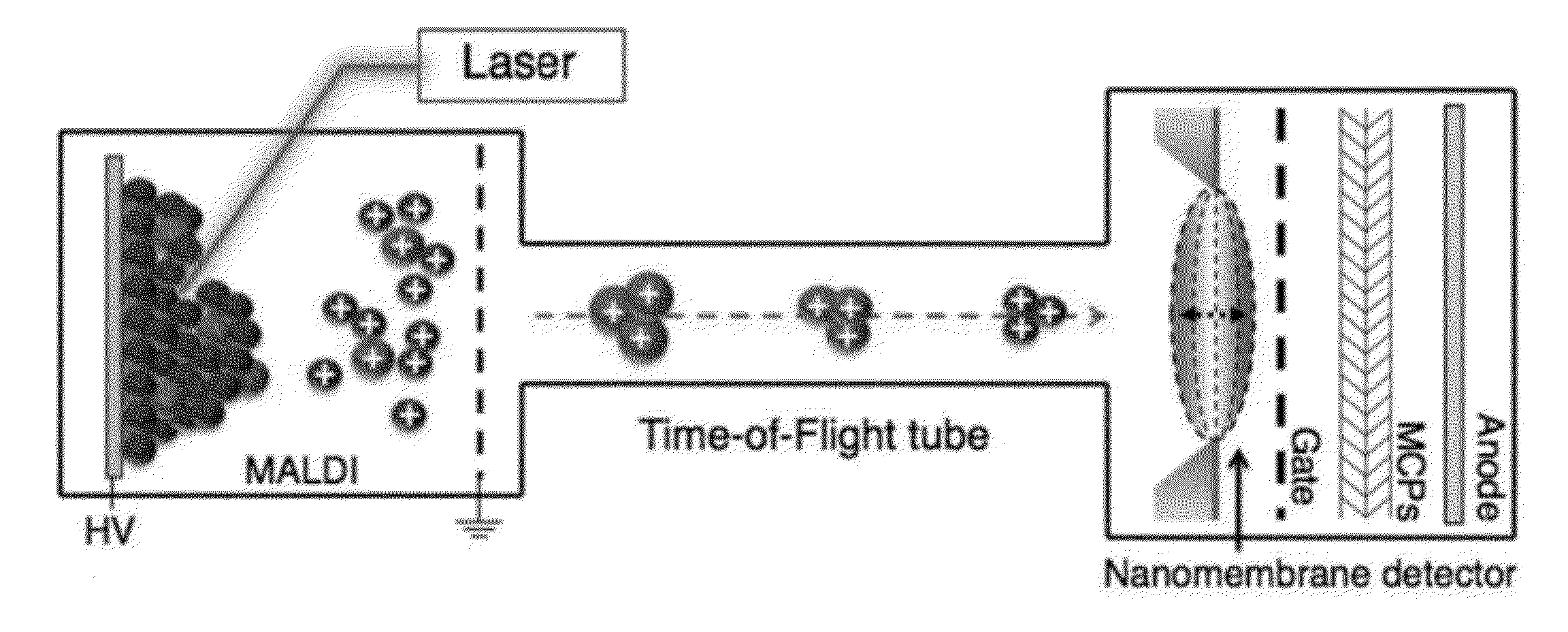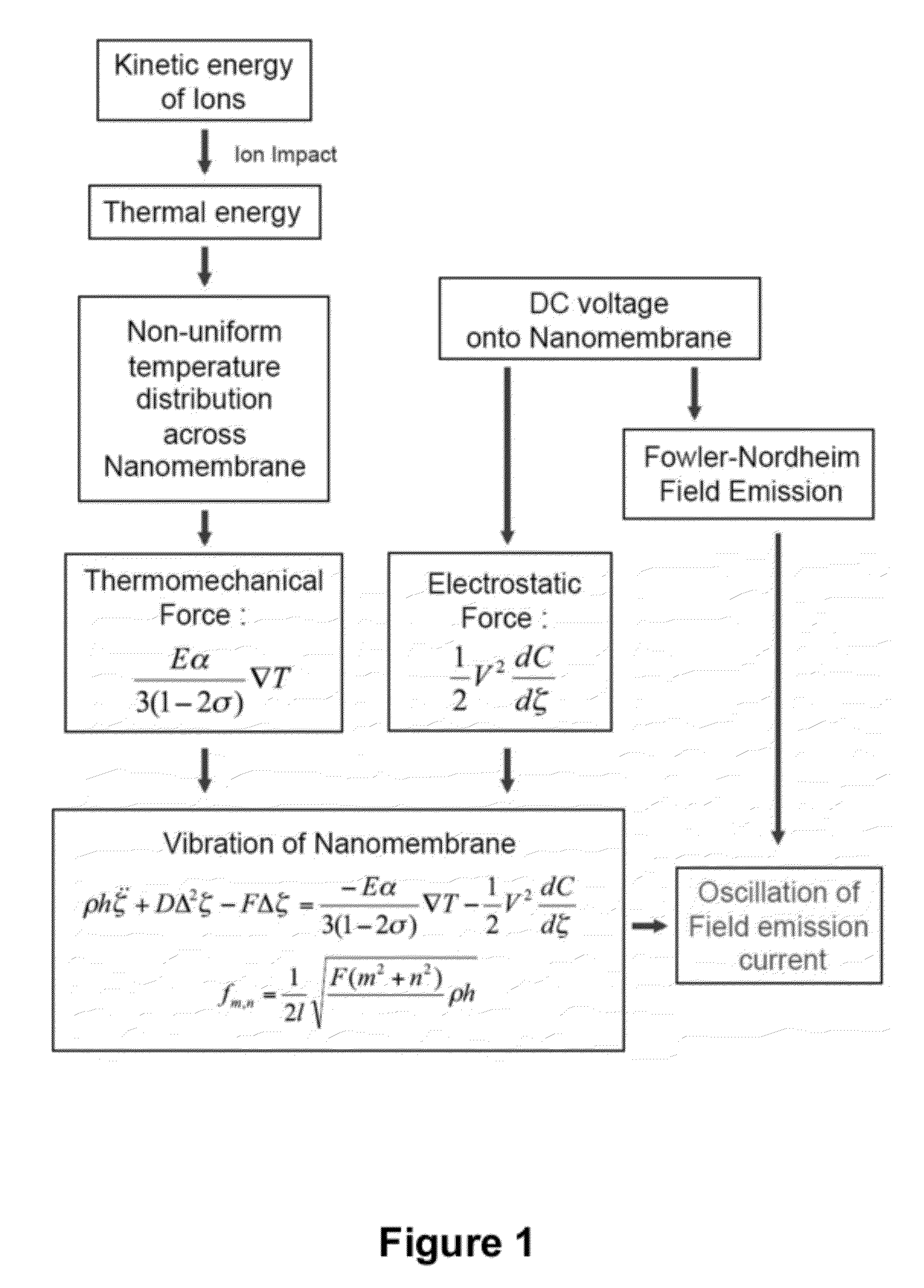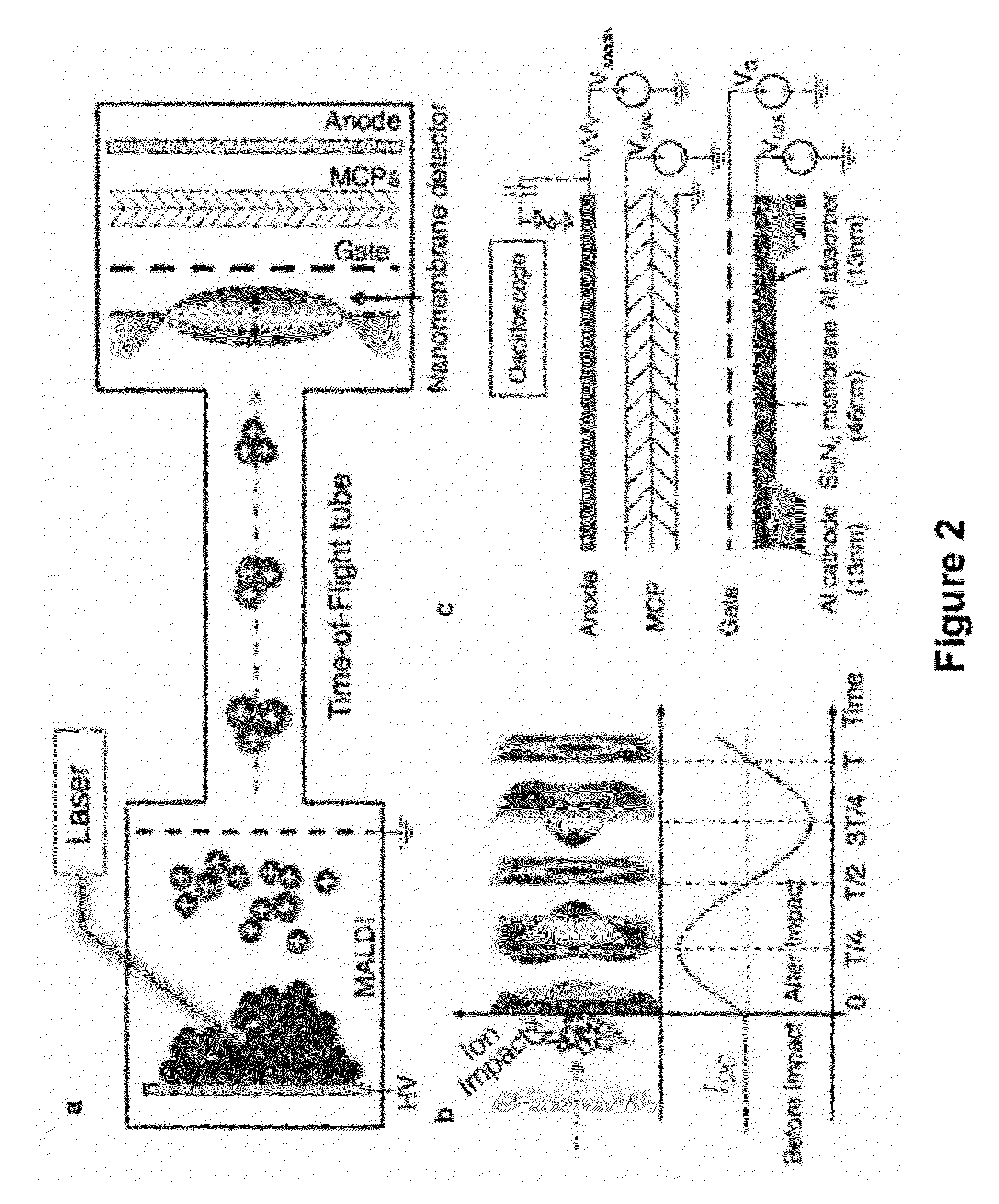Membrane Detector for Time-of-Flight Mass Spectrometry
a time-of-flight and mass spectrometry technology, applied in the field of membrane detector for time-of-flight mass spectrometry, can solve the problems of low overall efficiency, low overall efficiency, and large sample size of conventional mass spectrometry analysis of biomolecules, and achieve the reduction or minimal deadtime between measurements, increase the recovery time of the detector and detection method, and reduce the voltage threshold
- Summary
- Abstract
- Description
- Claims
- Application Information
AI Technical Summary
Benefits of technology
Problems solved by technology
Method used
Image
Examples
example 1
A Mechanical Nanomembrane Detector for Time-of-Flight Mass Spectrometry
Abstract
[0089]A mass spectrometer is a system comprised of three major parts: an ionization source, which converts molecules to ions; a mass analyzer, which separates ions by their mass to charge ratio; and an ion detector. Mass spectrometry was revolutionized in the late 1980s by the invention of electrospray ionization (ESI)1 and matrix-assisted laser desorption / ionization (MALDI)2,3, which jointly provided means of generating ions from previously inaccessible large molecules such as proteins and peptides. Mass analyzer designs have since evolved to accommodate the large ions that are produced, providing dramatic improvements in performance. However, little has changed in the area of ion detection, where ions continue to be detected by one of three basic principles4: direct charge detection (as in the Faraday cup detector), image charge detection (as in the inductive detector), or secondary electron generation ...
example 2
Quasi-Dynamic Mode of Nanomembranes for Time-of-Flight Mass Spectrometry of Proteins
[0174]Mechanical resonators realized on the nano-scale by now offer applications in mass-sensing of biomolecules with extraordinary sensitivity. The general idea is that perfect mechanical biosensors should be of extremely small size to achieve zepto-gram sensitivity in weighing single molecules similar to a balance. However, the small scale and long response time of weighing biomolecules with a cantilever restricts their usefulness as a high-throughput method. Commercial mass spectrometry (MS), such as electro-spray ionization (ESI)-MS and matrix-assisted laser desorption / ionization (MALDI)-time of flight (TOF)-MS are the gold standards to which nanomechanical resonators have to live up. These two methods rely on the ionization and acceleration of biomolecules and the following ion detection after a mass selection step, such as time-of-flight (TOF). Hence, the spectrum is typically represented in m / ...
PUM
 Login to View More
Login to View More Abstract
Description
Claims
Application Information
 Login to View More
Login to View More - R&D
- Intellectual Property
- Life Sciences
- Materials
- Tech Scout
- Unparalleled Data Quality
- Higher Quality Content
- 60% Fewer Hallucinations
Browse by: Latest US Patents, China's latest patents, Technical Efficacy Thesaurus, Application Domain, Technology Topic, Popular Technical Reports.
© 2025 PatSnap. All rights reserved.Legal|Privacy policy|Modern Slavery Act Transparency Statement|Sitemap|About US| Contact US: help@patsnap.com



